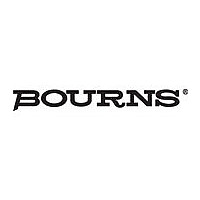TISP61089BSD Bourns, Inc., TISP61089BSD Datasheet - Page 17

TISP61089BSD
Manufacturer Part Number
TISP61089BSD
Description
Dual Forward-conducting P-gate Thyristors Programmable Overvoltage Protectors
Manufacturer
Bourns, Inc.
Datasheet
1.TISP61089BSD.pdf
(20 pages)
SEPTEMBER 2005 - REVISED MAY 2007
Specifications are subject to change without notice.
Customers should verify actual device performance in their specific applications.
Dedicated intra-building ports may use an R
single cycle rating. For the TISP61089BSD to survive the full 900 s test, the series overcurrent protection has to operate before the
TISP61089BSD current-time ratings are exceeded.
To meet ‘1089, the overcurrent protection must be coordinated with the requirements of Sections 4.5.7, 4.5.8, 4.5.9, 4.5.12, 4.5.13, 4.5.15 and
the TISP61089BSD. The overcurrent protection must not fail in the first level tests of Sections 4.5.7, 4.5.9 and 4.5.12 (tests 1 through 5). Test 6
through 9 of Section 4.5.12 are not requirements. The test current levels and their duration are shown in Figure 18. First level tests have a high
source resistance and the current levels are not strongly dependent on the TISP61089BSD series resistor value.
Second-level tests have a low source resistance and the current levels are dependent on the TISP61089BSD R
stepped lines at the top of Figure 18 are for the 25 Ω and 40 Ω series resistor cases. The unacceptable current region (Section 4.5.11) is also
shown in Figure 18. If current flows for the full second-level test time the unacceptable current region will be entered. The series overcurrent
protector must operate before the unacceptable region is reached.
Fusible overcurrent protectors cannot operate at first level current levels. Thus the permissible low current time-current boundary for fusible
overcurrent protectors is formed by the first-level test currents. Automatically resetable overcurrent protectors (e.g. Positive Temperature
Coefficient Thermistors) may operate during first level testing, but normal equipment working must be restored after the test has ended.
At system level, the high current boundary is formed by the unacceptable region. However, component and printed wiring, PW, current
limitations will typically lower the high current boundary. Although the series line feed resistance, R
second-level testing, after about 0.5 s this limitation will exceed the acceptable current flow values.
These three boundaries, first-level, second-level and unacceptable, are replotted in terms of peak current rather than rms current values in
Figure 19. Using a peak current scale allows the TISP61089BSD longitudinal current rating curves (Figure 3) to be added to Figure 19.
Assuming the PW is sized to adequately carry any currents that may flow, the high current boundary for the overcurrent protector is formed by
the TISP61089BSD rated current. Note that the TISP61089BSD rated current curve also depends on the value of gate supply voltage
‘1089 Section 4.5.16 (Continued)
Overcurrent and Overvoltage Protection Coordination
TISP61089BSD High Voltage Ringing SLIC Protector
0.7
0.5
0.3
0.2
0.1
30
20
10
7
5
3
2
1
0.01
Second Level Tests, 25 Ω
Second Level
Figure 18. '1089 Test Current Levels
First Level
25 Ω & 40 Ω
Tests, 40 Ω
First Level
through 5,
through 9
Tests # 1
Objective
Tests # 6
MAXIMUM RMS CURRENT
0.1
1
Time - s
TIME
vs
10
S
value of 8 Ω. The 8 Ω value limits the initial current to 13 A, which is within the TISP61089BSD
Unacceptable
100
AI6XAKB
1000
0.15
1.5
0.8
0.6
0.5
0.4
0.3
0.2
50
40
30
20
15
10
8
6
5
4
3
2
1
0.01
Second Level
Tests, 25 Ω
Figure 19. TISP61089BSD Overlay
25 Ω & 40 Ω
First Level
through 5,
Tests # 1
0.1
CURRENT DURATION
t — Current Duration — s
S
, limits the maximum available current in
PEAK AC
1
vs
S
resistor value. The two
10
Unacceptable
Second Level
Tests, 40 Ω
V
GG
V
100
GG
= -120 V
= -60 V
AI6XDM
1000











